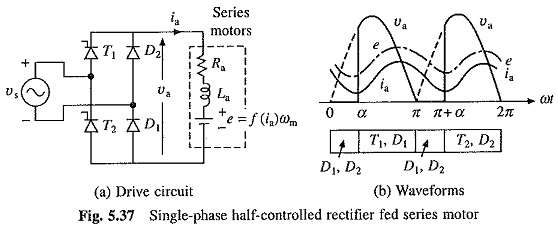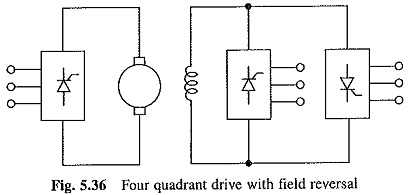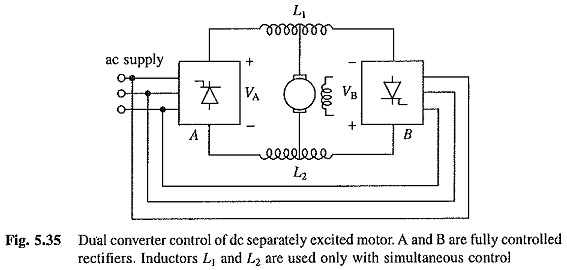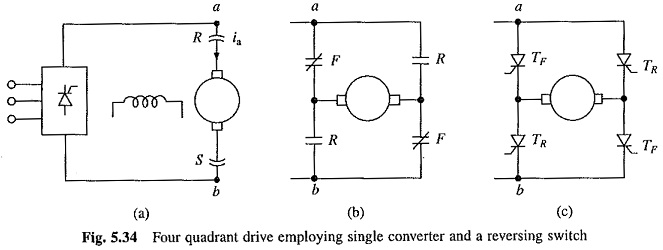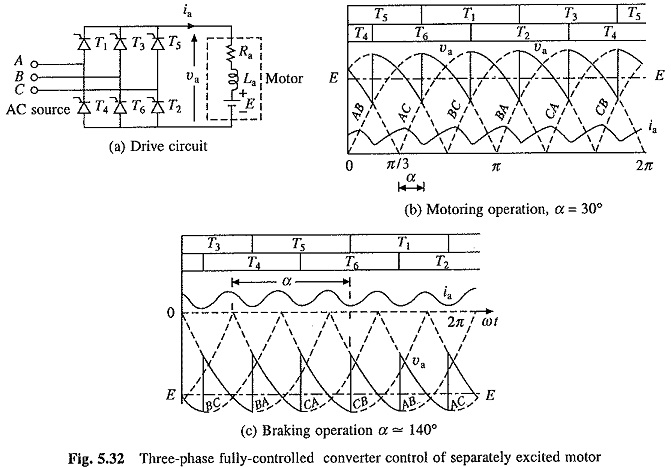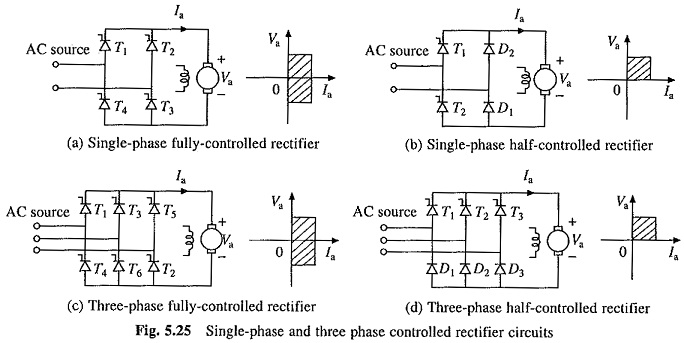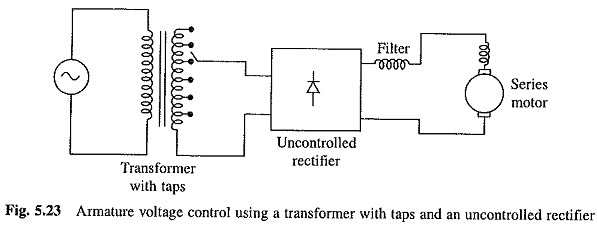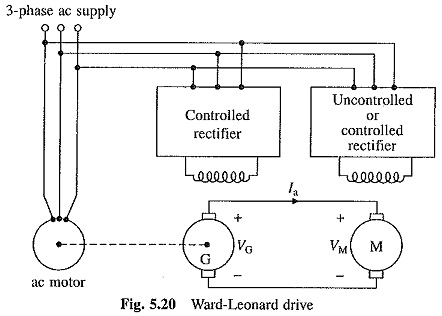Rectifier Control of DC Series Motor
Rectifier Control of DC Series Motor: Single-phase controlled Rectifier Control of DC Series Motor are employed in traction. A single-phase half-controlled Rectifier Control of DC Series Motor is shown in Fig. 5.37(a). Equivalent circuit of…
